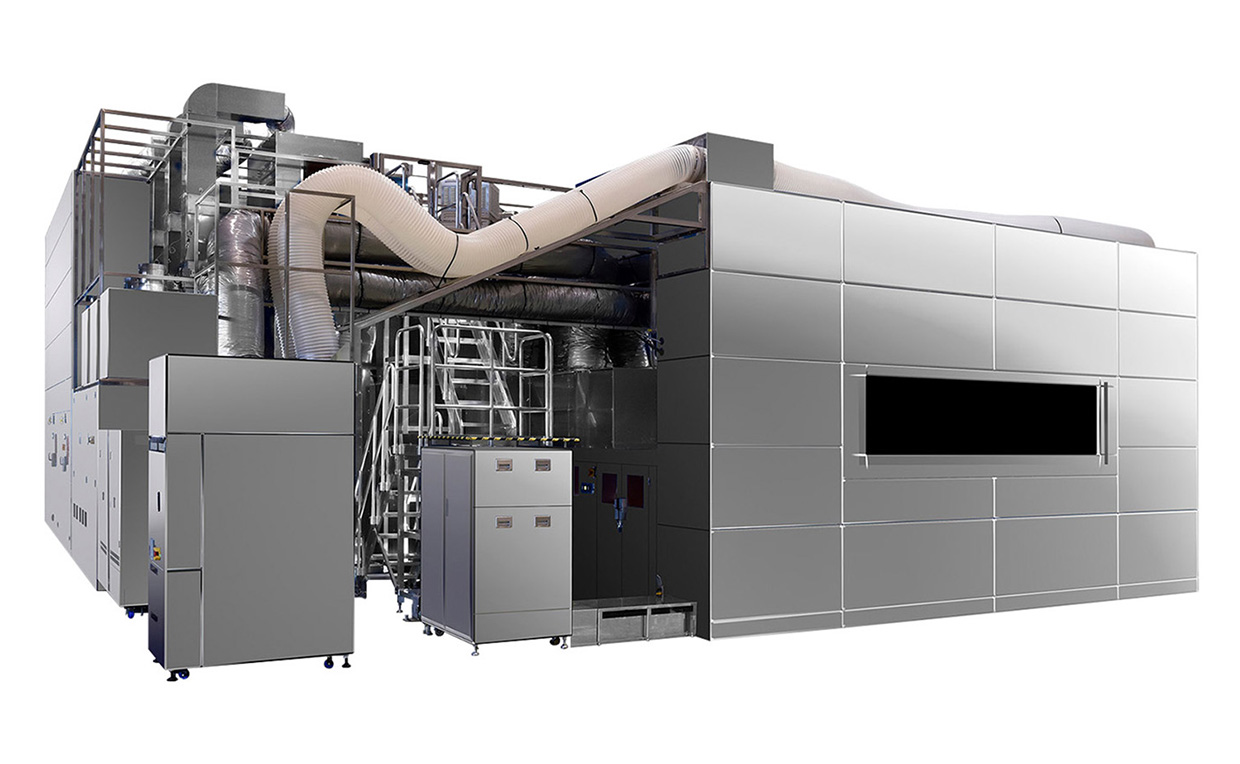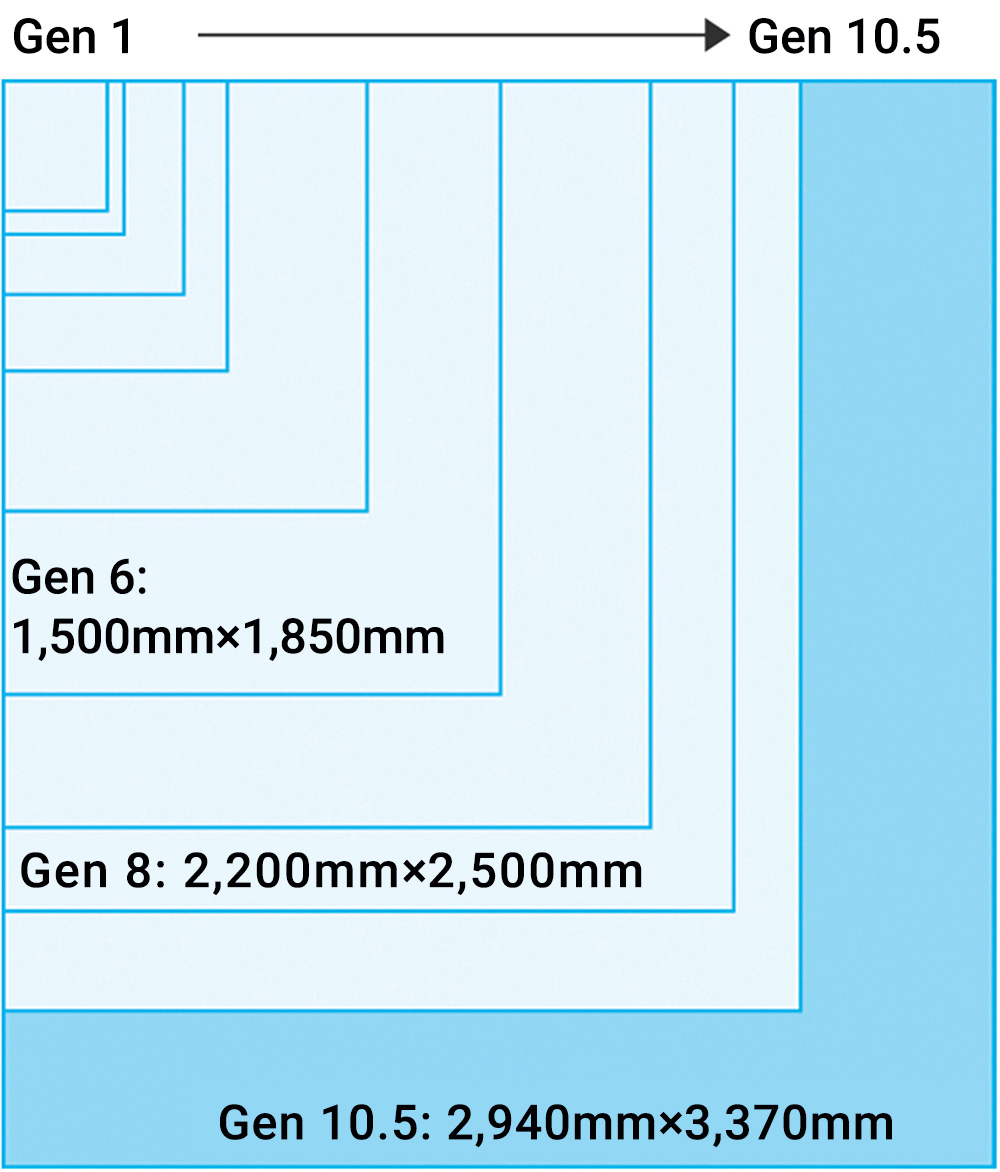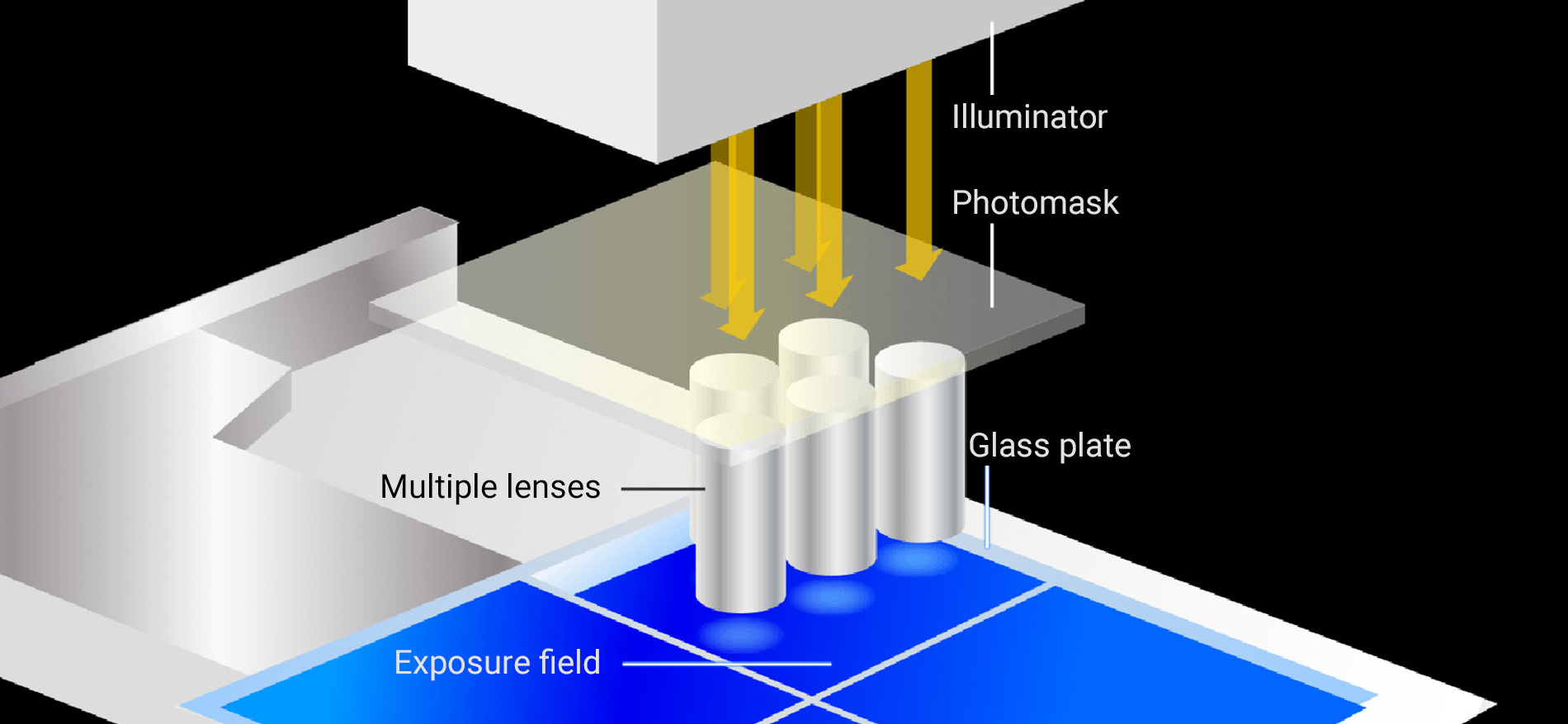FPD Lithography Systems
Leading the evolution of flat-panel displays — thinner, larger and increasingly high-definition

Each year, the flat-panel displays (FPDs) that are all around us are becoming thinner and larger, enabling us to more easily enjoy clearer and higher definition images. Nikon's FPD lithography systems are contributing significantly to this evolution.
The majority of the FPDs we see are liquid-crystal displays (LCDs) and Organic LED (OLED) displays. In both LCDs and OLED display, each pixel consists of red, green and blue. And on each color, a switch function called a thin film transistor (TFT) is provided to control the intensity of the passing light. On 4K (UHD=Ultra HD) displays, the number of pixels is more than 8 million. Since TFTs for red, green, and blue are attached to each pixel, the number of switches becomes more than 24 million. High-definition images are represented by controlling these TFTs. FPD lithography systems precisely pattern precise TFTs onto a glass plate.
The FPD lithography system irradiates light onto a photomask on which the original TFT circuit patterns are drawn, and the light exposes the patterns onto the glass plate through a lens. On a large glass plate, the exposure process is repeated several times in order to form the patterns onto the entire plate.
Supporting larger glass plates and higher definition panels
FPDs have achieved higher definition as the glass plates utilized have grown larger in size. Nikon addresses demands for such improvements with a system that efficiently produces large panels of more than 65 inches from the largest Gen 10.5 glass plates, as well as those for mass manufacturing of mid- and small-sized high-definition panels from Gen 6 plates. Lithography technologies have also been developed that enable high-definition patterning of a large area with a single exposure, along with measurement and adjustment methods for glass-plate surface distortions. Nikon contributes to the advancement of FPD manufacturing through such unique innovations.

Multi-Lens Projection System
As glass plates become larger each year, allowing a larger number of panels to be cut from them, it becomes necessary to increase productivity so that circuits over a wider area can be patterned with a single exposure. Nikon developed the multi-lens system based on its unique technologies as the solution to this problem. For efficient exposure, Nikon arranges multiple lenses in two rows that cover a large exposure area. FX-103SH/103S, the largest Nikon FPD lithography system, has as many as 14 lenses arranged in rows that are precisely controlled to function as one giant lens.

Product Technology
- Digital SLR cameras
- Mirrorless cameras
- Binoculars
- FPD Lithography Systems
- Semiconductor Lithography Systems
- Alignment Station
- Super Resolution Microscopes
- Ultra-Wide Field Retinal Imaging Device
- Video Measuring Systems
- Industrial X-ray/CT Inspection Systems
- Non-Contact Large-Volume Inspection System
